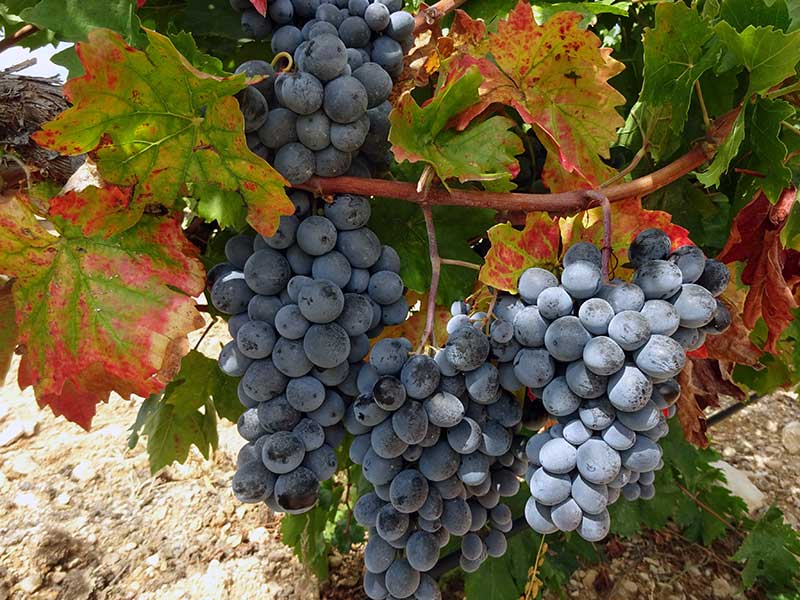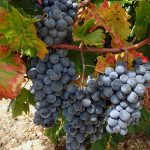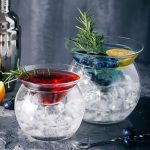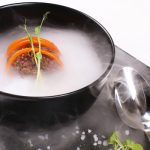
The taste to be obtained from the wine is closely related to the presentation of the wine as well as to the quality of the wine. In order to get the maximum taste from wine tasting, it is beneficial to pay attention to some factors first.
BEFORE TASTE
Service temperature
The general rule is that white wines should be chilled and red ones should be drunk at room temperature. A service temperature of 16-18 ° C is ideal for reds and 6-11 ° C for whites. Beyond this temperature range, tannin and fruity flavors are difficult to perceive in red wines. Generally, white wines do not have flavor or bouquet when served below 6 ° C. When served above 10 -11 ° C, it loses its vitality and liveliness and becomes flat. Of sumptuous and sweet white wines
It should be served 6-8 ° C, dry white wines at 8-10 ° C, and white wines made from Chardonnay grape around 11 ° C.
Glass
In order for the tone and clarity of the wine to be perceived comfortably, a wine glass suitable for its taste should be without a pattern and color. In general, although the wine glass has a slightly conical shape, curved and long structure is sufficient for wine tasting, various wine glasses can be preferred according to the type and characteristics of the wine to be tasted. Different goblets are available for red wines, white wines and sparkling wines. Also, since only a third of the glass will be filled when the wine is being tasted, the dimensions of the glass should contain a sufficient volume for tasting.
Decantation
The process of aerating red wines, especially old and aged ones, at least 30 minutes before they are drunk is called decantation or “decanting”. Red wines contain more tannins than white wines. As a result of the tannins, which add bitterness to red wine, dissolve by contacting with oxygen, the fruity and bouquets of red wine come to the fore. Special jugs called decanter or wine decanter accelerate the decantation process by increasing the contact of the wine with the air.
White wines that contain much less tannins than red wines do not need to be aerated before serving. White wines are cooled before serving and they are provided with freshness and vitality.
TASTING ORDER
In environments where more than one type of wine will be tasted or drunk one after another, it is recommended to go from white wine to red, young wine to aged, dry wine to sweet, light and low-density wines to full-bodied wines, as it will preserve the taste sensibility of the palate for as long as possible.
Wine Flaws
Around 1 to 10 percent of all wines are spoiled due to a fungal problem. Such wines smell musty. After the wine is opened, this smell continues to increase and spread. Their flavors are also musty and sour. To prevent this undesirable situation that can happen to any wine, the winemaker can significantly reduce the risk of cork spoilage by using quality solid cork. Oxidation is a defect that occurs when the wine is exposed to too much oxygen. It can occur at any stage of wine production, or it may occur as a result of the cork passage through air after the wine is bottled. The taste of oxidized wines is vinegarish and prosaic.
During the tasting, it is useful to review the following items in order to better taste the wine and evaluate the wines:
Eye
First of all, it is recommended to hold the wine glass by its foot or base. Thus, there will be no fingerprints on the glass that would hinder the perception of the color and clarity of the wine, and if white wine is tasted, the wine will be prevented from heating with the warmth of your hand. For visual inspection, the goblet is raised to eye level and exposed to light. A white tablecloth or a neutral background is ideal for examining the color and clarity of the wine and comparing it with other wines.
Nose
In order to keep the aroma and bouquet of the wine in the glass, the wine glasses are curved and the diameter of the glass becomes narrower towards the mouth. In order to be able to examine the flavors and fragrances, it is recommended to fill the glass not exceeding one third. Next, it is recommended to bring the nose closer to the glass and perceive the primary flavors of the wine. In addition, it is possible to understand the fungal problem and the unpleasant odors caused by oxidation at this stage.
Then, the wine glass is grabbed by its foot and turned around its axis several times and taken back to the nose. The aim here is to increase the contact of the phenols in the wine with oxygen and to reveal the unique flavor and bouquets more intensely.
Palate
First of all, since the sense of smell and taste move together, it is expected that the flavors coming to the nose are also perceived on the palate. Otherwise, the wine will not have consistency and integrity in itself. The tongue and the rest of the mouth have taste zones of different sensitivity. For example, the tips of the tongue perceive a sweet, acidic taste on the sides and a bitter taste on the back. After drinking a sip of wine, circulation of that sip to every corner of the tongue and mouth will make it easier to perceive the flavors in their entirety. In addition to the aroma and flavors perceived in the palate and nose, there are other sensations that the wine evokes in the mouth. Acidity, texture and length are some of them:
Acidity
Wines would be flat and flat if the grapes did not contain many acids naturally. Acidity, which is one of the most important elements in white wines, is expected to provide a desired vitality and vitality in the palate. Wines with low acidity or annoyingly high levels are not acceptable.
Tissue
Unlike the impressions about flavors, the wine’s properties related to its density or “touch” in the mouth are also called textural properties. Descriptions such as “wrapping the tongue”, “creating a sense of density”, “flowing easily”, “leaving a lasting taste on the palate” are used to express textural features. Concepts of density, body, tannin and length can be collected under the title of tissue.
Density – Complexity
The intensity of taste and smell can be evaluated on a line that ranges from plain and indistinct to strong and self-evident flavors. If an analogy is made with a sample of food; While potatoes and carrots have plain and low-intensity flavors, foods such as garlic and strawberries offer strong and complex flavors. Some wines are plain and fine, while some wines such as Moskado and Riesling are immediately distinguished by their high intensity, distinctive odor and flavor. However, complexity is not a criterion for determining the quality of the wine. The person can choose simple or complex flavors or scents according to their own taste.
Body / Body
The feeling of density that wines evoke in your mouth is called body. Wines range from “bodied” and “full” to “light” and “fluid”. For example, buttermilk has a denser body than milk and milk than water. The weight of bodied wines can be felt in the mouth. The fullness in wine can be determined depending on the type and production method of the grape, as well as increase depending on the sugar and alcohol content of the wine. KAV Boğazkere – Öküzgözü, KAV Narince are examples of full bodied wines.
Tannin
When you accidentally bite the grape seeds, the substance that creates a bitter sourness in the mouth is tannins. Tannin, which is found in the shells as well as the seeds, passes into red wine during the maceration process. This is why red wines are bitter than white wines. The tannins, which give excessive bitterness, gain a round structure as a result of aging especially in the barrel, and the wine gains a pleasant drink. Tannin also contributes significantly to the aging of red wines. Boğazkere is one of the most tannic grape varieties among our local grape varieties.
Oak
Wines kept in oak barrels acquire both oak-specific flavors and smells and continue their development by taking in a small amount of air thanks to the small amount of oxygen that penetrates the wine through the porous structure of oak. In addition, tannins that give the red wine bitterness gain a round structure, especially as a result of aging in the barrel. Flavors and scents reminiscent of vanilla, cinnamon, ginger, spice, caramel, coffee, toast, incense, butter or cream give us a clue that the wine has been aged in oak. Waiting in the barrel gives the wine a fullness and richness as well as a more complex structure. Some wines are in perfect harmony with oak. For example, the vast majority of fine wines made from Chardonnay grape are aged in oak and gain a “strong body” and “complexity”.
Length
The taste left by some wines on the palate is permanent. Such wines are considered to be “long”. If a long wine is suitable for one’s taste, it encourages you to sip it over and over again. On the other hand, some wines touch the palate and disappear; It is not permanent on the palate. Such wines are defined as “short”.
Balance
The harmonious combination of all the elements listed above is called “balance” in wine. In order for a wine to be defined in a balanced way, visual and olfactory perception and taste perception must be in harmony. For example, a wine that conflicts with its smell and taste will be inconsistent in itself. A wine whose acidity is not balanced will irritate the palate. A red wine that has not rounded tannins will cause excessive bitterness on the palate.






